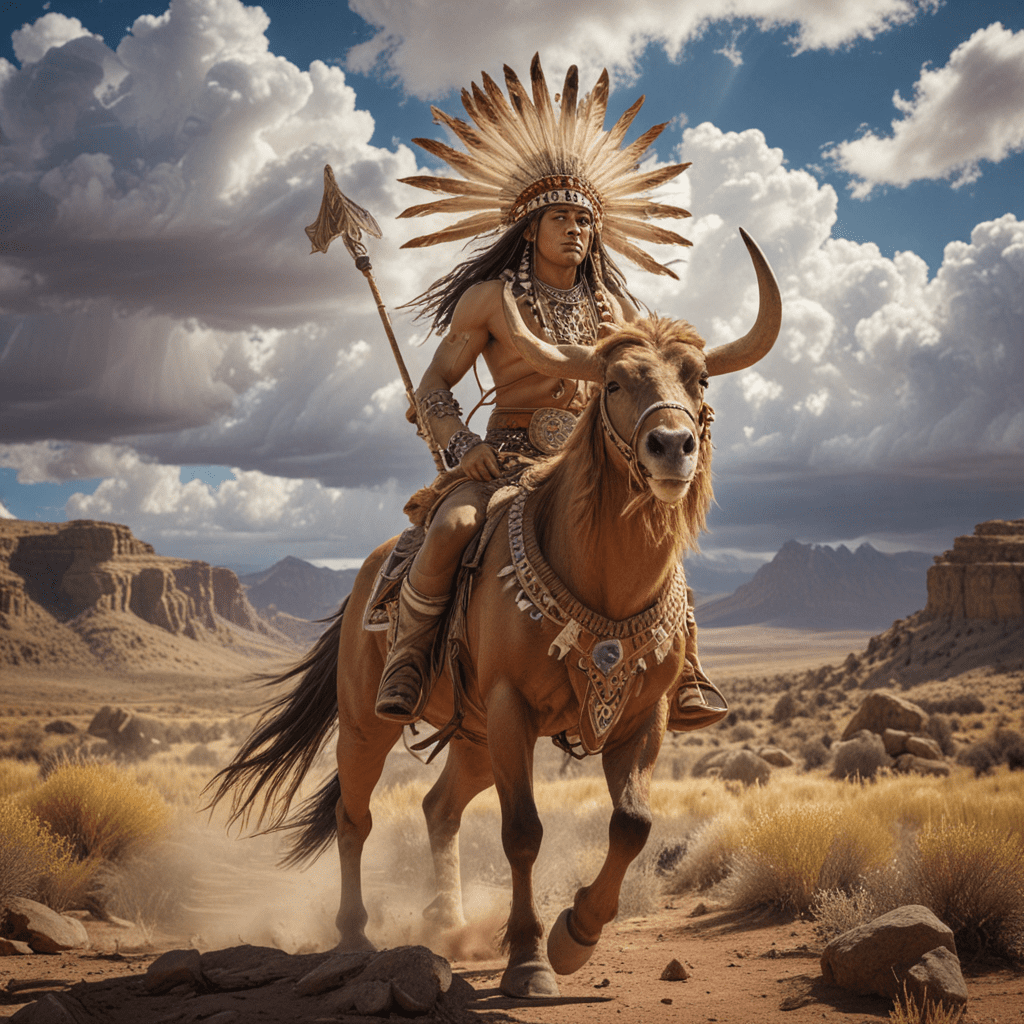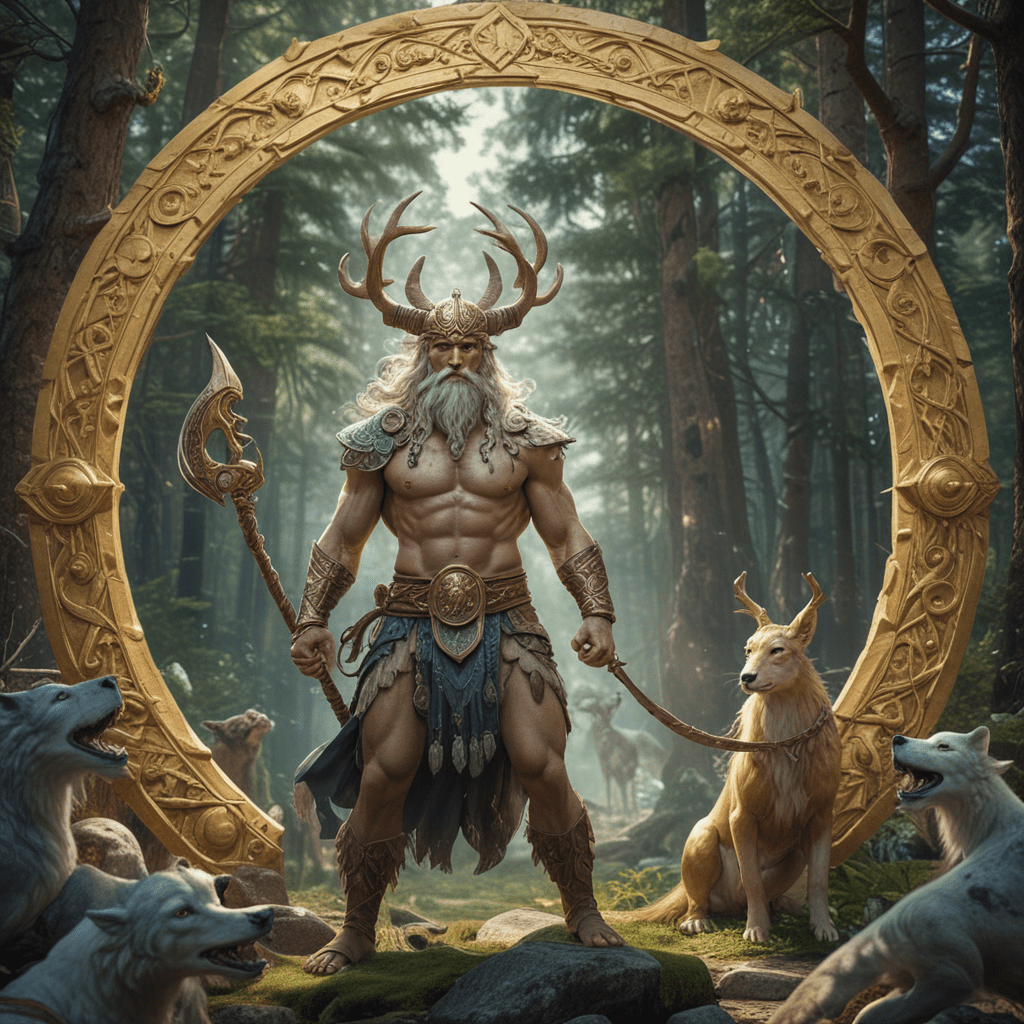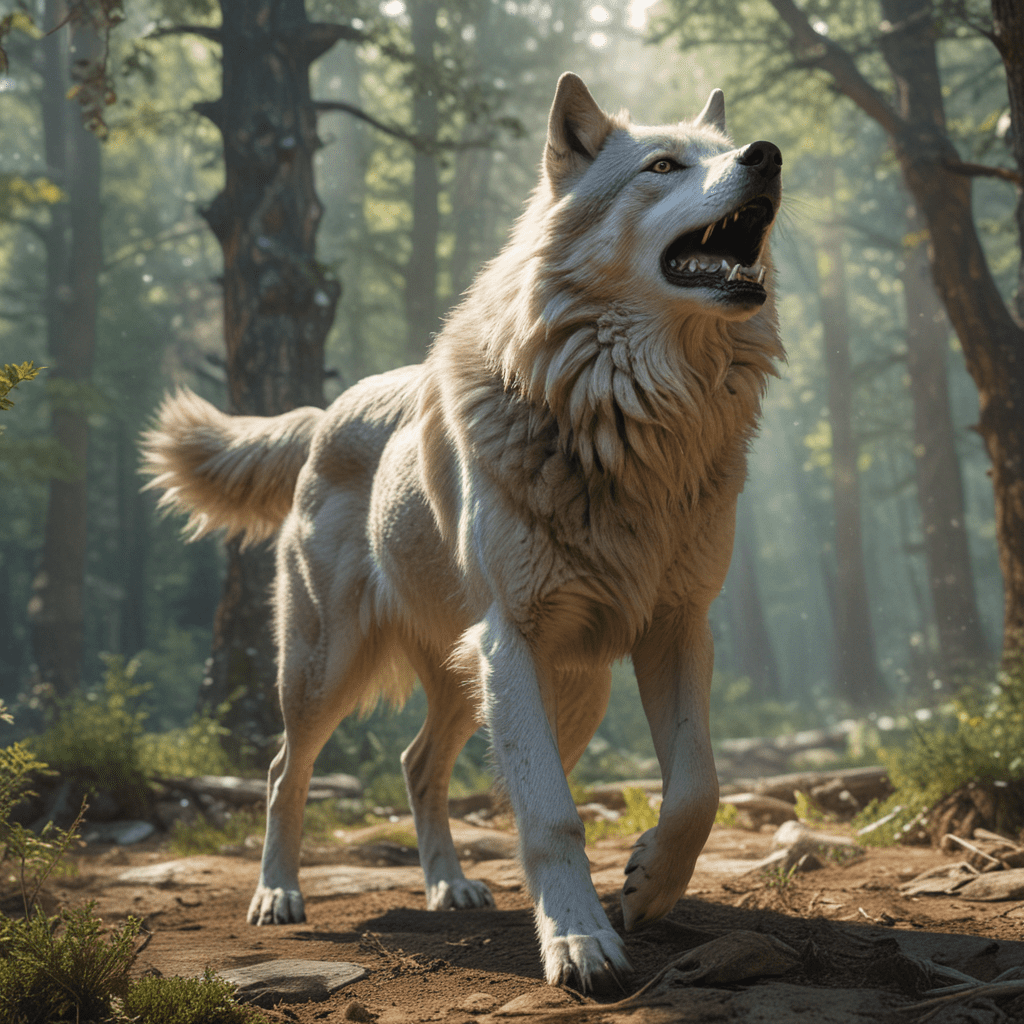1. Coyote: The Trickster and Creator God
In the Ute mythology, Coyote holds a prominent place as the creator god and the embodiment of chaos and cunning. Often depicted as a gray trickster with a long bushy tail and sharp teeth, Coyote is renowned for his mischievous and unpredictable nature. As the creator, Coyote is believed to have shaped the world through his actions and deceptions. His trickery and transgressions often led to the creation of important elements of the natural world, such as the stars, rivers, and mountains. The Ute people consider Coyote both a source of amusement and a reminder of the unpredictable forces that govern the universe.
2. The Twins: Warrior and Healer
The twin brothers, Nacineu and Tavibo, occupy a central position in Ute mythology. Nacineu, the elder, is portrayed as a skilled warrior and protector, while his younger brother, Tavibo, possesses healing abilities and spiritual wisdom. Together, they represent the duality of human nature and the complementary aspects of strength and healing. The twins were born from the union of the Sun and the Earth, embodying the connection between the celestial and terrestrial realms. Their stories often revolve around their battles against monsters and their efforts to bring balance and harmony to the world.
3. Bear: The Protector and Teacher
Bears hold a revered position in Ute mythology as symbols of strength, wisdom, and protection. They are considered to be guardians of the mountains and forests, offering guidance and assistance to those who venture into their domain. In many stories, bears appear as teachers, imparting knowledge and skills to humans who are willing to learn from them. The Ute people believe that bears possess a deep connection to the spirit world and can mediate between the human and animal realms. Respecting bears and treating them with reverence is considered crucial for maintaining harmony with the natural world.
4. The Sun and Moon: Sky Gods and Cycle Keepers
The Sun and the Moon are celestial deities who play a vital role in Ute mythology. The Sun, known as Taqwats, is regarded as the father of the twin brothers and the giver of life. He is believed to travel across the sky each day, bringing light and warmth to the world. The Moon, known as Tavi, is seen as the mother of the twin brothers and the ruler of the night. She is associated with cycles, fertility, and the feminine aspects of nature. Together, the Sun and the Moon maintain the natural cycles of the day and night, the seasons, and the tides.
5. Water Babies: Guardians of Water Sources
In Ute mythology, Water Babies are supernatural beings that dwell in rivers, lakes, and other bodies of water. They are often depicted as small, childlike creatures with glowing eyes and translucent bodies. Water Babies are believed to be the guardians of water sources and the protectors of all living beings that depend on water. They are said to possess healing abilities and can grant wishes to those who approach them with respect and purity. However, they can also be mischievous and play tricks on those who show disrespect or harm their watery domain.
6. The Night People: Shadow Beings and Cave Dwellers
In Ute mythology, the Night People are enigmatic beings associated with darkness and mystery. They are said to dwell in caves and emerge only at night, avoiding the light of day. The Night People are often depicted as having long, flowing hair, glowing eyes, and pale skin. They are believed to possess supernatural abilities, including the power to walk through solid objects and to communicate with animals. Despite their formidable appearance, the Night People are not inherently malevolent. They are often seen as guardians of the night, protecting travelers who venture into their domain.
7. The Wind Man: Messenger and Guide
The Wind Man is a powerful spirit in Ute mythology who personifies the wind and its unpredictable nature. He is depicted as a tall, slender figure with long, flowing hair and a piercing gaze. The Wind Man is believed to be a messenger between the human and spirit worlds, carrying prayers and offerings to the heavens. He can also be a guide for those who have lost their way, leading them to safety. However, the Wind Man can also be mischievous and unpredictable, changing direction suddenly and disrupting human plans.
8. The Rabbit: Symbol of Fertility and Renewal
The Rabbit holds a special place in Ute mythology as a symbol of fertility and renewal. Rabbits are often depicted as playful and energetic creatures, representing the transformative power of nature. In many stories, rabbits appear as tricksters, using their agility and cunning to outsmart their adversaries. They are also associated with the moon and the feminine aspects of nature, representing cycles of birth, death, and rebirth.
9. The Buffalo: Sacred Herd and Source of Sustenance
In Ute mythology, the Buffalo is a revered animal that symbolizes strength, abundance, and prosperity. The Buffalo is seen as a sacred herd that roams the plains, providing sustenance and material for the Ute people. Buffalo hunts were not only essential for survival but also held deep ceremonial and spiritual significance. The Buffalo is believed to be a gift from the Creator and is treated with respect and gratitude.
10. The Changing Woman: Earth Mother and Healer
The Changing Woman is a central figure in Ute mythology who represents the Earth Mother and the transformative power of nature. She is often depicted as a beautiful woman who can change her appearance at will, embodying the cycles of life, death, and rebirth. The Changing Woman is believed to have created the first humans and taught them the skills necessary for survival. She is also associated with healing and fertility, offering her wisdom and protection to those who seek her guidance.
FAQ
Who are the most important gods in Ute mythology?
Coyote, the Trickster and Creator; The Sun and the Moon; and The Changing Woman.
What animals are sacred to the Ute people?
Buffalo, Bear, and Rabbit.
What is the significance of the Night People in Ute mythology?
They are guardians of the night and protectors of travelers.
What role does the Wind Man play in Ute mythology?
He is a messenger between the human and spirit worlds and a guide for those who have lost their way.
How is the Buffalo revered in Ute mythology?
As a sacred herd that symbolizes strength, abundance, and prosperity.



